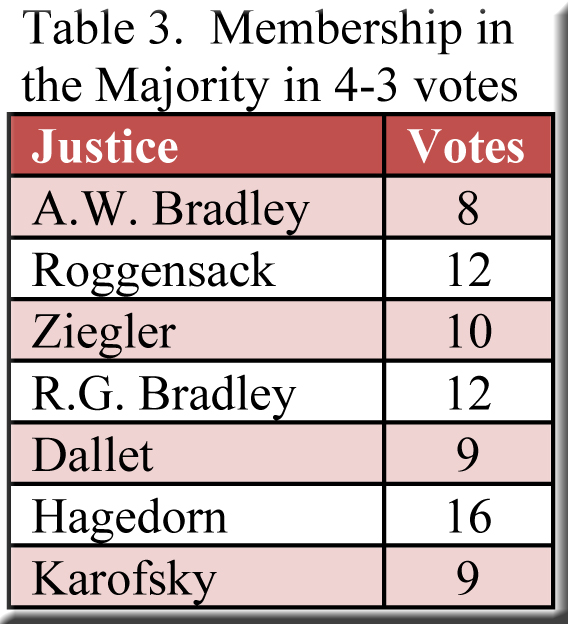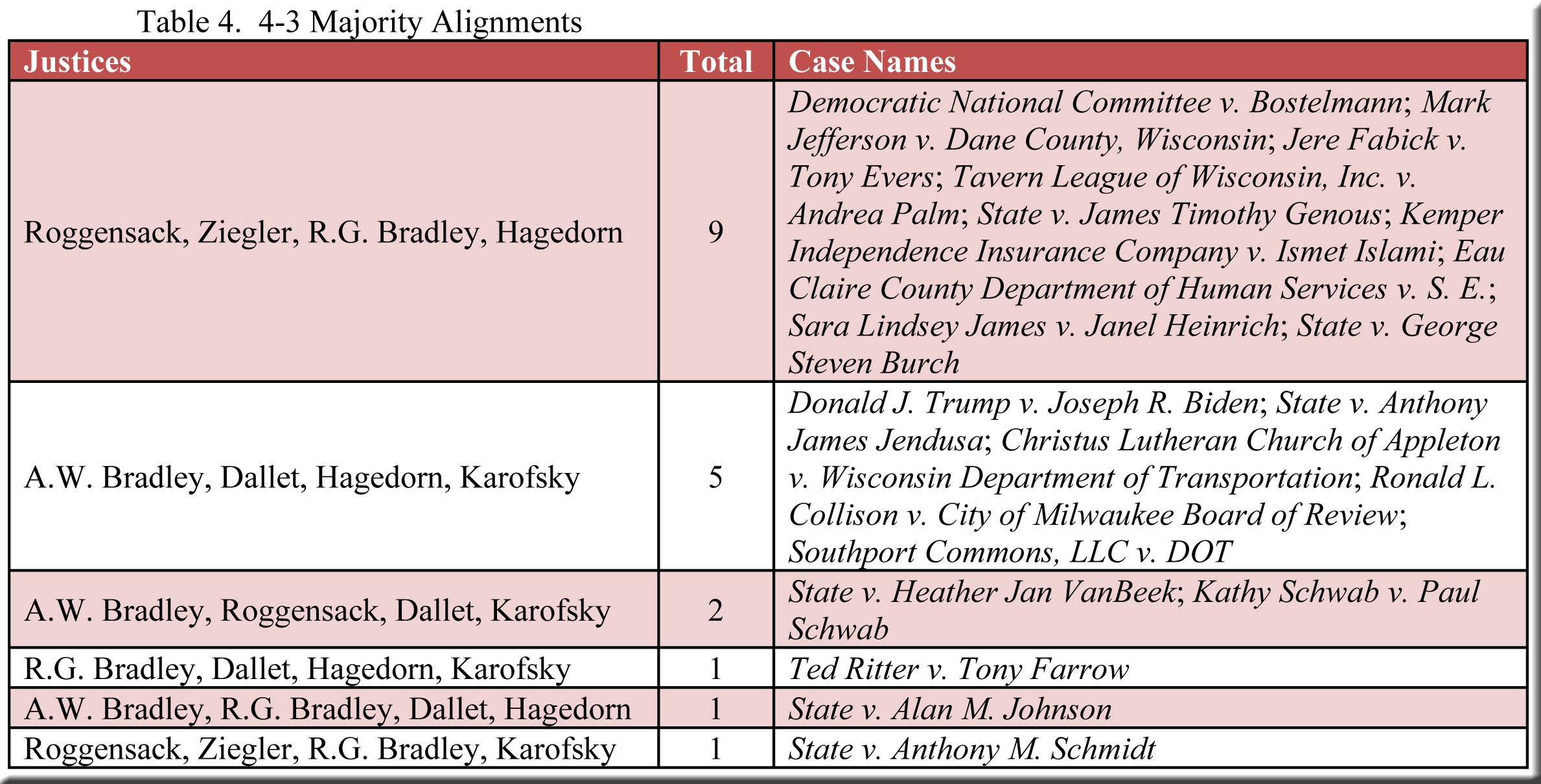Now that the justices have issued their final substantive decision of the 2020-21 term, the way is clear for a statistical assessment of their work over the past 12 months. Today’s post, the first in a series, focuses on the number of decisions filed and the topic of polarization.
Number of decisions filed
Last year we observed that the quantity of decisions in 2019-20 fell to 45—a steep drop from the 58 filed the previous term, and near the modern-day low of 43. In 2020-21 the total recovered to 52, as displayed in Graph 1.[1] This is close, but not quite back, to the average of 54 decisions per term over the preceding decade.
Earlier posts have shown that during the 1970s, prior to the advent of the court of appeals, the justices often filed approximately 300 decisions per term. SCOWstats has now extended its coverage back to 1956-57, and Graph 2 indicates that while the number of decisions declined in the 1960s and late 50s, it was still generally at or above 250. It will be interesting to see whether the total remains in this neighborhood earlier in the 20th century.
Polarization
A polarized court may be understood as one in which an unyielding bloc of justices almost always votes together—and almost always in opposition to another, similarly resolute, set of justices. This occurred a few years ago when Justices Abrahamson and A.W. Bradley often found themselves in an isolated minority against the court’s conservative majority, which resulted in an unusually large number of 5-2 decisions, with the court’s two liberal justices routinely in the minority.
More recently, as the court’s composition changed, this pattern of 5-2 voting began to erode, and it all but disappeared in 2020-21 when Justice Karofsky replaced Justice Kelly. Table 1 shows that the court’s three liberal justices (A.W. Bradley, Dallet, and Karofsky) formed part of the majority in 5-2 (and 4-2) decisions as frequently as did other justices—and much more often than did Justice R.G. Bradley, one of the court’s conservatives.
The evolving apportionment of 5-2 votes has been accompanied by a smaller number of 5-2 decisions, which might suggest a diminished share of contentious outcomes in 2020-21. However, such was not the case, as the number of 4-3 decisions soared. In fact, Table 2 reveals that a considerably larger percentage of cases were decided by 4-3 margins in 2020-21 than in any of the 35 preceding terms covered by the table. Or, to put it another way, 2020-21 was the only one of the 36 terms in which 4-3 decisions were more numerous than unanimous decisions.
No doubt this surging share of 4-3 decisions reflects to some degree the replacement of Justice Kelly by Justice Karofsky, which increased the liberal cohort from two to three. Nevertheless, the 4-3 margins were by no means always produced by marshaling four conservatives against three liberals. As detailed in Table 3, conservatives did appear more often in 4-3 majorities, but not to an overwhelming extent. To me, the most striking aspect of these 4-3 decisions is the frequency with which Justice Hagedorn joined the three liberals to form a majority (Table 4). He did so five times—and, overall, in 4-3 cases he participated in 16 of the 19 majorities, making him nearly indispensable in close votes.[2]
Conclusion
We are left with the question of how to account for the unprecedented share of 4-3 decisions in 2020-21. Perhaps the stream of controversial cases pertaining to the pandemic and the 2020 election should figure in an explanation, as should the supplanting of Justice Kelly by Justice Karofsky. If so, we may encounter a similarly large table of 4-3 decisions in our summary of next year’s term, given that the court’s composition is not expected to change in 2021-22, and lawsuits have already surfaced bearing on the 2022 election.
[1] Among the total of 52 is one 3-3 per curiam decision. Although I normally omit these from SCOWstats tables, I have included it in Graphs 1 and 2 in order to be consistent with the entries for earlier terms.
[2] I have included State v. Heather Jan VanBeek as a 4-3 case, though, as a fractured decision, not all of it gained the support of four justices.






Speak Your Mind